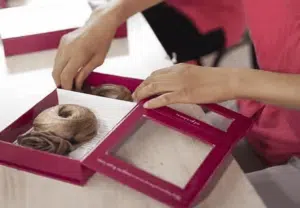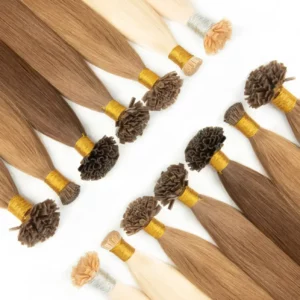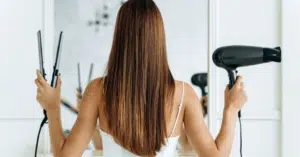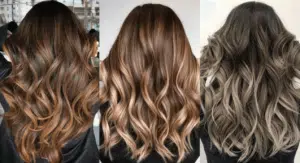Thin edges, sore spots, and extra hair in the brush create worry fast. The real question is simple: do hair extensions cause hair loss, or can they be worn safely?
Yes,hair extensions can cause hair loss if tight tension, excessive weight, missed maintenance, harsh products, and scalp conditions. But ight, even tension, correct grams per row, timely move-ups, and gentle routines keep follicles safe and lower traction alopecia risk.
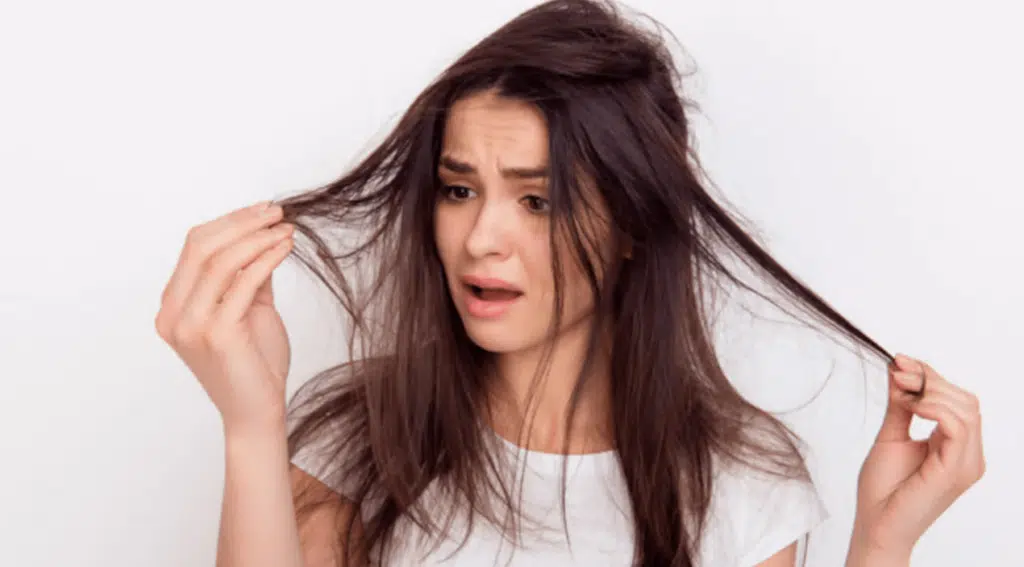
This guide explains mechanisms, warning signs, prevention, and recovery. The language stays practical for salon owners, professional stylists, wholesalers, and informed wearers.
Can hair extensions cause hair loss?
Fear usually centers on traction alopecia and thinning edges. Clear rules reduce anxiety and protect growth.
Yes, extensions can contribute to hair loss when tension is high, rows migrate, weight exceeds section strength, or scalp health is unstable. With balanced tension, correct weight, even spacing, and on-time move-ups, extensions are unlikely to cause hair loss.
Dive deeper

It helps to separate baseline risk from controllable risk. Baseline risk exists because any added weight can stress follicles if applied or maintained poorly. Controllable risk covers technician choices (tension, grams per row, anchor spacing, section size) and wearer habits (brushing style, drying the base, heat placement, product use near anchors). As natural hair grows, a row drops and leverage on follicles increases. Overdue rows are a common trigger for breakage and focal shedding at anchor points. Tight maps compress a small area and can create soreness that persists beyond normal settling.
Daily routines also move the needle. Rough detangling at the stitch line, sleeping on a damp base, applying oils or heavy masks near anchors, and placing hot tools on the base all raise stress. Scalp biology matters. Seborrheic dermatitis, psoriasis, postpartum shedding, anemia, and thyroid disease make roots more reactive. A simple matrix keeps choices clear:
| Factor | Low-risk choice | High-risk choice |
|---|---|---|
| Tension | Light, even, comfortable | Tight, “snatched,” pressure points |
| Weight | Match grams to density | Heavy stacks on fine hair |
| Timing | Rebook every 6–10 weeks | Let rows migrate |
| Brushing | Support base, ends→roots | Yank knots at stitch |
| Products/heat | Keep off anchors, moderate heat | Oils at base, hot tools on base |
| Health | Stable scalp, no active shed | Active dermatitis, postpartum peak |
Follow the left column for safe wear. If the right column cannot be changed, pause or lighten plans.
Why do hair extensions cause hair loss?
People often blame the hair itself. In most cases, the causes are mechanical load, timing errors, and chemistry near the base, all interacting with scalp health.
Extensions contribute to loss when traction is chronic, when anchors slip and snag, when weight exceeds section capacity, or when oils and heat weaken the base. Skin disease and systemic stress amplify these triggers.
Dive deeper

Four buckets explain the majority of incidents:
1) Traction and leverage
Anchors hold small sections. High tension or undersized sections concentrate force on a few follicles. Growth lowers the row and increases leverage, pulling backward and downward. Early signs include tenderness, redness, and follicular bumps. Control comes from even, light tension, correct section size, and move-ups before migration.
2) Weight and stacking
Added grams must match natural density. Over-stacking compresses a ridge and overloads follicles, especially on fine hairlines. Control comes from distributing weight across more anchors and reducing stacks near sensitive zones.
3) Slip, loops, and friction
Migrated rows expose beads or tapes. Loops catch during brushing and sleep, cutting hairs at the base. Control comes from nightly braids, silk or satin pillowcases, loop brushes, and timely rebooking.
4) Chemistry and heat
Oils and masks at the base reduce grip; high heat on the stitch softens adhesives or dehydrates nearby fibers. Irritating shampoos and active dermatitis increase sensitivity. Control comes from keeping slip products off anchors, placing heat away from the base, and using gentle cleansers.
| Root cause | Typical sign | Rapid fix | Ongoing fix |
|---|---|---|---|
| Traction | Tender, red base | Loosen or refit | Lighter rows, larger sections |
| Overweight | Ridge, pressure | Reduce stack | Spread grams across anchors |
| Migration | Beads visible | Early move-up | Shorter cadence |
| Chemistry/heat | Slippage, dry base hair | Clarify base; stop oils | Heat rules; product mapping |
Why is hair thinning after extensions?
Removal day often reveals a lot of shed hair at once. That visual can be alarming, but context matters.
Thinning after extensions commonly reflects trapped natural shed, temporary stress-shed from tight mapping, or a long rebook gap. True damage shows as broken hairs at anchors or smooth, empty patches. Early care reverses most mild cases.
Dive deeper
Natural biology sheds 50–100 hairs daily. While extensions are in, many of these shed hairs remain trapped near the base. During removal or move-up, that accumulated shed releases all at once. This looks dramatic but is often normal. Pattern, scalp appearance, and timeline give the answer:
- Uniform, diffuse thinning with a calm scalp usually equals combined natural shed plus minor friction on lengths.
- Small circular or linear gaps at anchor points suggest traction at those points.
- Red, tender bumps imply inflammation from tight tension or overdue rows.
- Diffuse thinning three to four months after illness, childbirth, crash dieting, or high stress suggests telogen effluvium; this is temporary.
Use a quick triage:
| Finding | Likely cause | Action |
|---|---|---|
| Large shed at removal, calm scalp | Released natural shed | Reassure; standard care |
| Focal smooth spots | Local traction | Rest area; lighter plan next |
| Red, painful bumps | Inflammation | Remove/refit; soothe scalp |
| Diffuse thinning after stress | Telogen effluvium | Medical check; gentle care |
Reduce grams, shorten rebook intervals, and consider medical evaluation when patterns are unclear or symptoms persist.

Do extensions make hair fall out?
The myth treats extensions as the cause. Reality points to poor rules and late maintenance.
Extensions do not make hair fall out by default. Incorrect tension, heavy rows on fine hair, missed move-ups, rough brushing at the stitch, and scalp disease drive most problems. Good mapping and simple routines prevent them.
Dive deeper
A helpful analogy is a backpack. A light, well-fitted pack is fine. A heavy, tight pack on the same spot daily causes pain. Hair responds in the same way. Good installs spread load and respect edges; poor installs compress the same follicles for weeks. Late maintenance adds more pull as rows migrate.
Home habits matter. Support the base while brushing and detangle from ends to roots. Keep conditioner and oils away from anchors. Dry the base completely after every wash or heavy sweat. Place hot tools away from the base and use heat protectant. A simple habit table clarifies choices:
| Habit | Risky version | Safer version |
|---|---|---|
| Brushing | Yanking knots at base | Hold base; short strokes upward |
| Drying | Sleeping with damp base | Base 100% dry before bed |
| Products | Oils/masks at anchors | Lengths only; clean base |
| Scheduling | Skipping rebooks | 6–10 week cadence |
When these basics are steady, shedding looks normal and growth continues.
Do hair extensions cause permanent hair loss?
“Permanent” implies scarring and no regrowth. That outcome is uncommon and preventable in most cases.
Permanent loss is rare and linked to chronic traction alopecia with long cycles of tight maps and missed maintenance. Early removal, rest, lighter plans, and medical care prevent scarring in the vast majority of cases.
Dive deeper
Scarring alopecia replaces follicles with scar tissue. Warning signs include pain that persists beyond the first 48 hours, crusting follicular bumps, shiny skin where hair once grew, and no short regrowth after a rest period. These changes develop over time, not days.
Protective rules:
- Stop or refit when pain lasts beyond day two.
- Shorten cadence for fast growers, athletes, and swimmers.
- Rotate anchor locations when possible to avoid loading the exact same follicles each cycle.
- Reduce grams per row on fine hair and avoid heavy stacks at edges.
- Refer to dermatology when shiny, smooth patches appear or inflammation persists.
| Sign | Temporary irritation | Red flag for scarring |
|---|---|---|
| Soreness | Fades in 24–48h | Ongoing pain after day 3 |
| Bumps | Mild, transient | Crusting, burning |
| Thinning | Short regrowth visible | Smooth shiny areas |
| Pattern | Single tight map | Repeated tight cycles |
Early action keeps follicles healthy and avoids long-term change.
How can hair loss risk be prevented with extensions?
Simple rules protect comfort and growth while keeping wear stress-free.
Prevention focuses on light, even tension; correct grams per row; balanced anchor spacing; on-time move-ups; and clean, dry bases. Scalp stability and health screening guide the start date.
Dive deeper
A five-part framework works well:
1) Consultation and screening
Check density, edges, and scalp condition. Ask about postpartum status, recent illness, crash dieting, medications, anemia, and thyroid history. When shedding is active or scalp disease flares, delay or lighten plans.
2) Mapping and weight control
Set section size to match grams per row. Use silicone-lined beads (where applicable) to cushion. Keep edges and crown swirls clear of heavy stacks. Spread weight across more anchors instead of piling density in one zone.
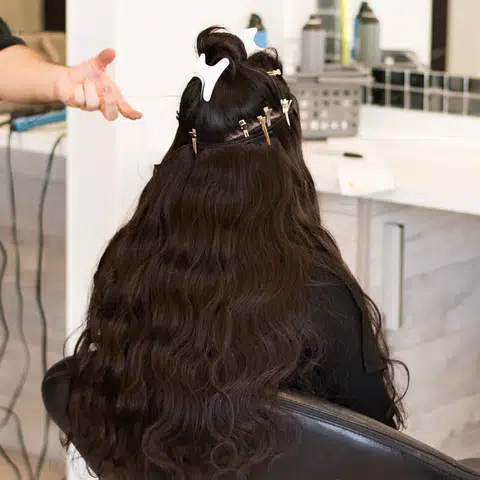
3) Timing discipline
Book 6–10 week intervals, earlier for fast growers and high-activity lifestyles. Migration increases leverage; shorter cadence prevents it.
4) Home care
Brush twice daily while supporting the base. Wash 2–3× weekly with sulfate-free shampoo; apply conditioner from mid-lengths to ends. Keep products off anchors. Dry the base completely. Use heat protectant and moderate temperatures away from the base. Sleep with a loose braid on silk or satin.
5) Rapid response
Persistent pain, visible migration, or red bumps trigger a quick check. Early refit or temporary removal prevents escalation. DIY fixes on tangled bases often worsen breakage.
| Step | Practical action | Why it works |
|---|---|---|
| Screen | Confirm scalp stability | Avoid inflamed starts |
| Map | Match grams to density | Lower traction |
| Schedule | 6–10 week rebook | Stop leverage |
| Care | Clean, dry base | Maintain grip |
| Respond | Early check on symptoms | Protect follicles |
Who should pause or modify extension plans?
Some scalps need time or lighter plans to protect long-term growth.
Pause or adapt when scalp disease is active, postpartum shedding is heavy, traction signs already exist, or medical causes of shedding are untreated. Temporary pieces or lighter rows bridge the gap without stress.
Dive deeper
Candidacy sits on a spectrum. Active seborrheic dermatitis or psoriasis increases inflammation and irritation at anchors. Postpartum peaks around month three to four; density often rebounds by month nine to twelve. Telogen effluvium after illness or high stress clears as triggers resolve. Thyroid and iron issues require medical treatment first. When edges show past traction or miniaturization, keep grams low, avoid hairline stacking, and select thinner bases that hide with minimal print-through. Clip-ins or halos offer length and volume while density recovers.
| Scenario | Safer plan |
|---|---|
| Active dermatitis/psoriasis | Treat first; delay install |
| Postpartum month 3–6 | Very light rows or pause |
| Recent illness/stress shed | Wait for stabilization |
| Thin edges/traction history | Avoid edges; reduce grams |
| Unexplained diffuse shedding | Medical workup before install |
Short delays protect future installs and long-term satisfaction.
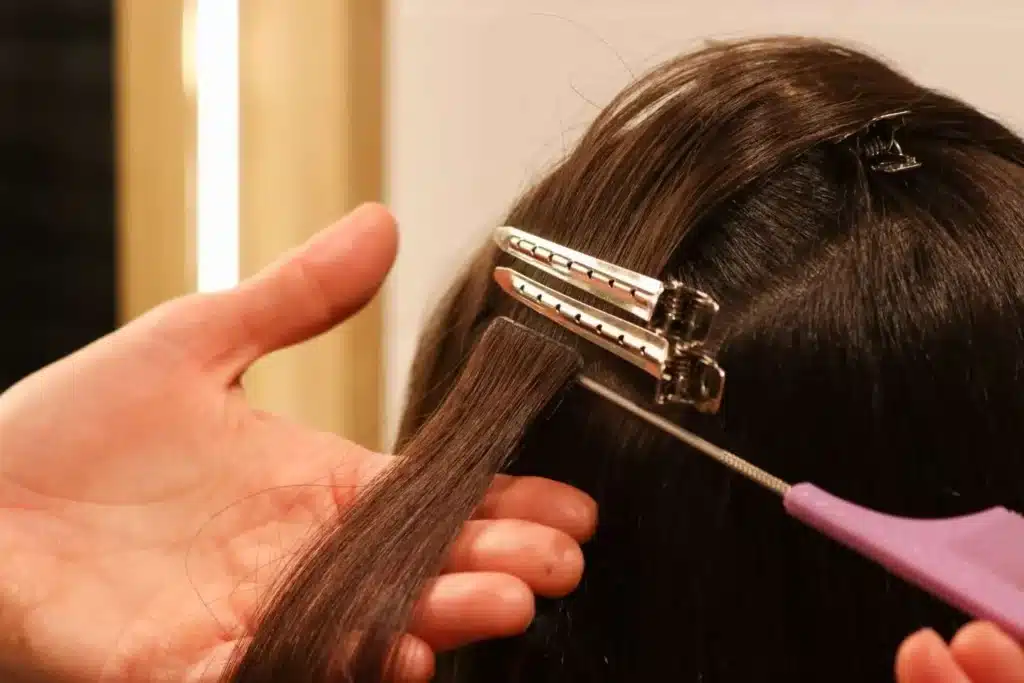
My opinion
Safe extension wear follows simple physics and steady habits. Light, even tension and weight matched to natural density matter most. Rebooking on time prevents leverage from migration. A clean, dry base and heat placed away from the stitch preserve grip and fiber quality. When shedding patterns or scalp symptoms raise doubt, a brief rest and lighter plan protect long-term growth far better than pushing through one more cycle.
FAQ
Why is there so much hair during removal?
Natural shed accumulates while extensions are in and releases all at once. If the scalp is calm and thinning is uniform, this is typically normal.
Do extensions make hair fall out in the shower?
Higher shed during wash often reflects trapped hairs letting go. Stable anchors and a clean base indicate normal biology, not damage.
How can thinning after extensions be prevented?
Use light, even tension; match grams to density; rebook every 6–10 weeks; support the base while brushing; keep products off anchors; dry the base fully.
Who should delay extensions?
Those with active scalp disease, heavy postpartum shed, recent illness-related shedding, untreated thyroid or iron issues, or existing edge thinning.
Which base type helps fine hair?
Ultra-thin bases (e.g., hand-tied) reduce print-through and improve comfort when grams per row stay light.
Conclusion
Extensions are safe when tension is light, weight matches density, move-ups are on time, and bases stay clean and dry. Catch problems early, adjust plans, and protect long-term growth.
Hibiscus Hair Manufacturer has been dedicated to producing high-quality hair extensions for 25 years and is a recognized leader in the industry. If you are interested in finding a reliable hair extensions supplier and wholesale for your brand, please visit our website for more information:
HOME

